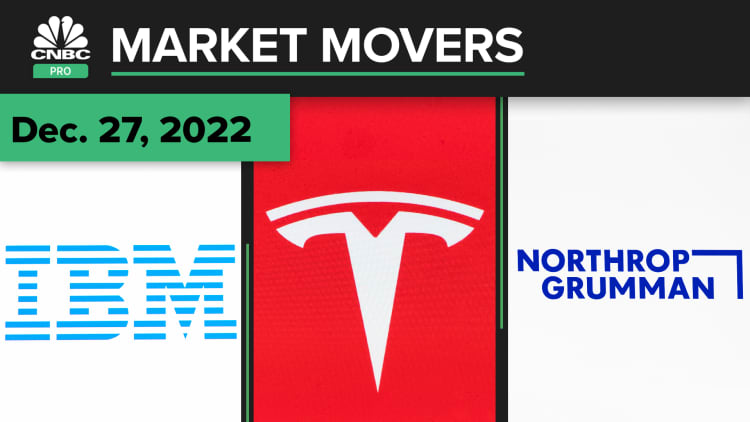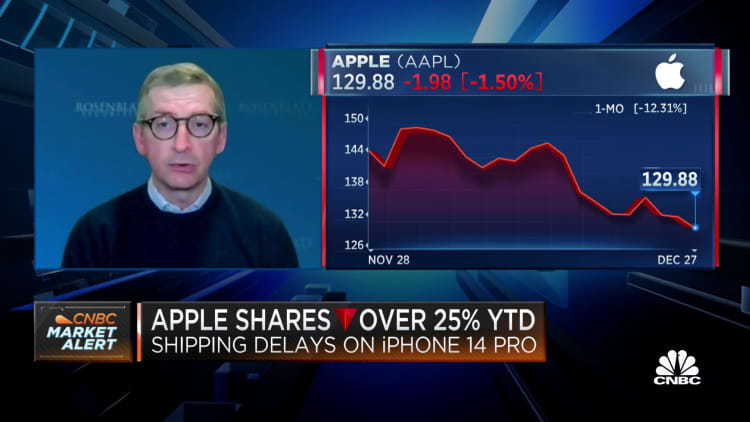
The S&P 500 fell Tuesday, at the start of the holiday-shortened week, as bond yields climbed and investors weighed the economic outlook for 2023.
The Dow Jones Industrial Average rose 37.63 points, or 0.11%, to finish at 33,241.56. The S&P 500 fell 0.4% to settle at 3,829.25, while the Nasdaq Composite shed 1.38% to end at 10,353.23.
China-linked stocks advanced as the country loosened Covid restrictions. Tesla dropped more than 11% on news of an extended production pause, with the stock on pace for its worst year ever. Southwest shed nearly 6% as the airline canceled thousands of flights.
Bond yields also pushed higher, putting pressure on growth stocks like technology. The yield on the 10-year Treasury note was last up nearly 11 basis points to trade at 3.85%. Apple's stock was among the worst performers in the Dow, falling to levels not seen since June 2021 and closing 1.4% lower.
"It's basically the continuation of high yields depressing growth, with redistribution into other sectors that are smaller, but not big enough to change the headline index," said Keith Lerner, Truist's co-chief investment officer.
The combination of tax-loss selling, portfolio rebalancing and investors deciding where to position for 2023 may also be weighing on the indices, said Sameer Samana, senior global market strategist for Wells Fargo Investment Institute.
Stocks are headed for their worst yearly performance since 2008, with the Dow and S&P off by 8.5% and 19.7%, respectively, in 2022. The Nasdaq's fallen 33.8%.
For December, the S&P has dropped 6.2%, while the Dow and Nasdaq have tumbled 3.9% and 9.7%, respectively. The major averages are on pace for their biggest monthly declines since September.
After a brutal year consumed by inflation and recession fears, investors hoped to cap off 2022 on a positive note. Friday kicked off the period for a Santa Claus rally, which is typically considered the final five-day trading stretch in the current year, as well as the first two trading days in the new year.
Questions also lingered over whether the volatility will continue into 2023 and what the economy, and inflation, will bring as the calendar year turns a corner.
Markets were closed Monday for the Christmas holiday. In this shortened trading week, investors are expecting either relative quiet or further volatility due to low trading volumes.


